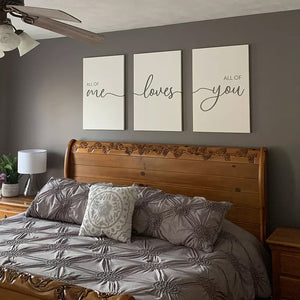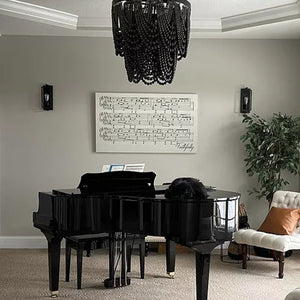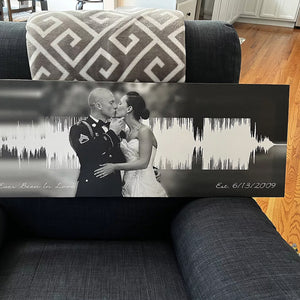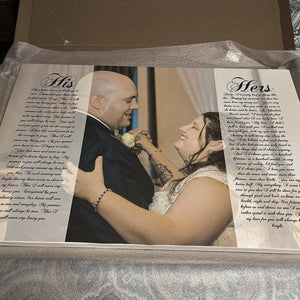What Is A Giclee Print? (Beginner's Guide)
Feb 22, 2019
Giclee printing (pronounced zhee-clay) is a method of printing to create high quality prints. Originating from the French term, “la giclée,” it means, “that which is sprayed or squirted.” Giclee printing began in the 1980s, when high-resolution digital scans were used in conjunction with archival quality inks. In 1991, printmaker Jack Duganne coined the term for fine digital prints that are made on inkjet printers. Giclee printing is a type of inkjet printing, but not all inkjet prints are giclee prints. The intention of giclee printing is to produce a product at a higher quality and with a longer lifespan than a standard desktop inkjet printer.
Originally, the word, “giclee” was used to describe digital reproductions of conventional artworks (painting or drawing) or photographs. Today, however, it is generally accepted that a giclee print can be entirely created in a digital workflow on a modern computer application, like Illustrator or Creative Cloud editions of Adobe Photoshop. There are those who would argue that applying the term “giclee printing” to a work is done with the sole intention of charging a higher price; however, for a work to be truly giclee, there are three basic requirements that must be met.
How to make giclee prints

How are giclee prints made? Giclee prints are made with a number of materials and technologies. What makes a giclee print is the combination of high resolution, paper choice, pigment-based inks and inkjet printer.
#1 Document Resolution
For an image to be printed as a giclee, it must be created at a resolution of no less than 300 dots per inch (DPI). Regarding a photo or a conventional artwork reproduction, the camera or scanner used to capture the image or scan the artwork must be able to do so at 300 DPI. When you set up a file for a giclee print, make sure that it is set at at least 300 DPI. This will ensure that the final print has the sharpest detail and lacks any of the fragmentation that can occur with images of lower resolution.
#2 Choice of Paper
For a giclee print, the choice of paper is crucial: the paper or substrate used to print the final piece must be of archival quality. A professional series of paper will typically say if it is archival quality on the box. It will say if it is acid free and whether it consists of a 100% cotton or rag base. These types of papers are the best for longevity and color reproduction, and can be found at a variety of different sellers. Some common examples are Epson and its Signature Worthy Series, and Moab with its Somerset and other professional lines.
#3 Ink & Printer
The biggest difference between a standard inkjet print and a giclee print is that giclees are printed using pigment-based inks rather than dye-based inks that are found in lower-cost inkjets. Pigment-based inks have a longer lifespan: they can last anywhere from 100 - 200 years without significant fading. The type of printer used for giclee printing is usually a larger format model that specifically uses pigment-based inks and can hold 8 - 12 color ink cartridges. Generally, the more inks that are used, the more sophisticated the color range will be on final output. Ink names like UltraChrome K3 from Epson and LUCIA from Canon are two of the wider known pigment-based inks from the major printing manufacturers.
What is the difference between a giclee and a print?

| Giclee Print | Digital Print |
|---|---|
| 12 color inkjet printer
High resolution: 300 DPI Acid free paper Pigment based archival inks Won’t yellow over time Lasts 100 - 200 years |
Watercolor paper, comic paper or high gloss photo paper
More affordable than giclee 4 color process, which means that detail and color could be up to 10% off from the original |
What is a giclee print worth?
Are giclee prints worth anything? Are giclee prints expensive? How much are giclee prints? Giclee prints are more expensive to produce than bulk prints (which use traditional lithography), and they are priced accordingly. Though giclee prints aren’t as valuable as original pieces of art, they have allowed artists to disseminate their works to a larger audience, making them very valuable.
Giclee prints are expensive because the technology and materials used to create these prints are expensive. Additionally, the process itself is painstakingly slow: most giclees are produced one or two at a time. Reproductions produced by lithography are produced hundreds at a time on high-speed presses.
How long will giclee prints last?
If properly cared for by the owner, a giclee print will last at least 100 years without significant fading. If your giclee print is framed and hung in a location outside of direct sunlight, it can last even longer.











1 comment
Great info and thorough. It has answered my questions about how to choose a printing method based on the intention of the image, the images function and its distribution.
Thanks.